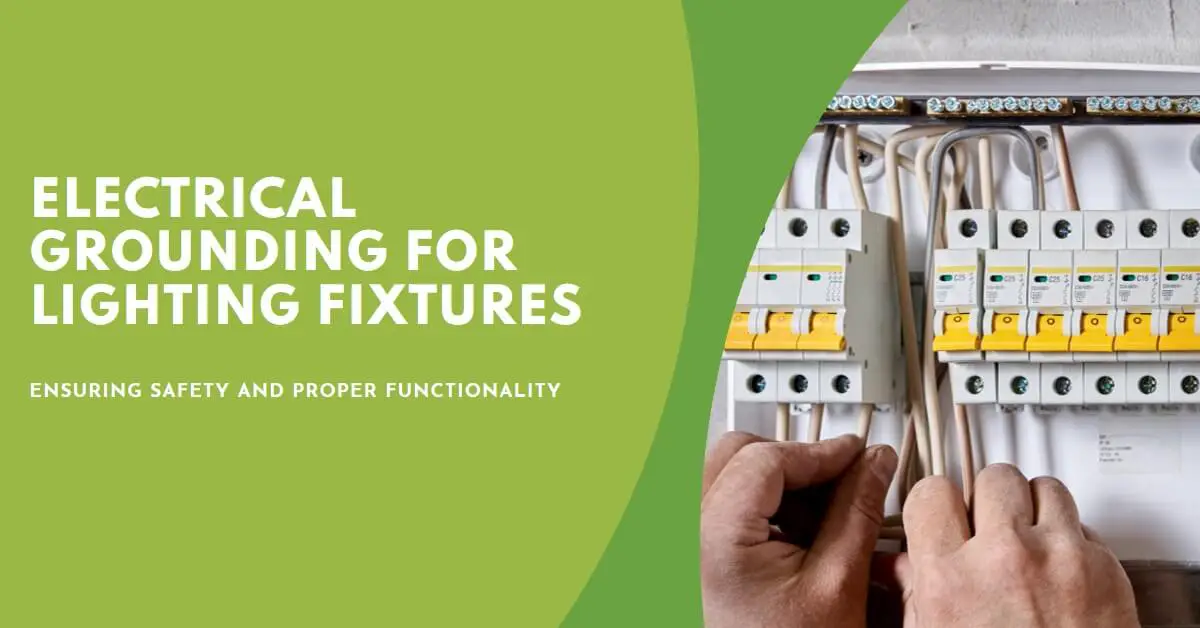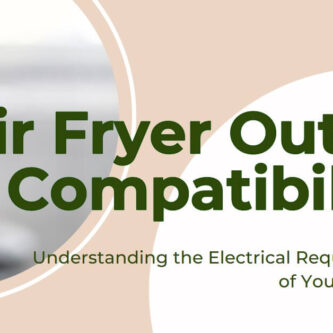Image: “Article Feature Image” by Bing is licensed under CC BY-NC-SA 4.0. Source: Bing Graphic Art. License: CC BY-NC-SA 4.0.
Light fixtures are essential components of our homes and workplaces, providing illumination and enhancing the aesthetic appeal of our spaces.
However, ensuring their proper installation and functioning is crucial for electrical safety. One aspect of light fixture installation that often raises questions is the need for a ground wire.
Yes, light fixtures generally require a ground wire for proper electrical safety.
In this article, we will explore the importance of electrical grounding, discuss whether light fixtures require a ground wire, and provide insights into the various grounding methods and safety considerations associated with light fixtures.
Understanding Grounding
Electrical grounding is a fundamental concept in electrical systems, serving to protect people and equipment from electrical shocks and potential hazards.
It involves connecting electrical devices to the ground or earth, creating a pathway for excess electrical current to flow safely away in the event of a fault.
Grounding helps prevent electrical shocks, reduces the risk of electrical fires, and ensures the stability of electrical systems.
Grounding in Light Fixtures
Light fixtures, like any other electrical device, can benefit from proper grounding. Grounding is generally required for light fixtures that have metal parts or housings, as these can conduct electricity and pose a potential risk if a fault occurs.
Light fixtures, especially those with metal parts or housings, need a ground wire to establish a safe pathway for electrical current.
The ground wire serves as a protective measure, redirecting excess electrical current to the ground in the event of a fault.
This helps prevent electrical shocks and reduces the risk of fire hazards. Proper grounding ensures that any potential electrical faults are safely discharged, providing a safer environment for individuals and protecting the integrity of the electrical system.
Ground Wire in Light Fixtures
A crucial element of grounding light fixtures is the ground wire. The ground wire serves as a safe pathway for electrical current in the event of a fault.
It is typically made of copper or aluminum and is connected to the metal frame or housing of the light fixture.
The ground wire provides a low-resistance path for electrical current to flow to the ground, effectively dissipating any excess current and preventing electrical hazards.
For more information read my article: Safe and Sound: Understanding Appliances that Don’t Need a Ground.
Grounding Methods for Light Fixtures
There are several methods for grounding light fixtures, depending on the electrical system and the specific fixture design. These include:
- Grounding through the electrical system: In many cases, light fixtures are grounded through the electrical system itself. The electrical wiring in the building is connected to a grounding system, usually via a grounding electrode system such as a grounding rod. The metal parts of the light fixture are then bonded to this grounding system, ensuring effective grounding.
- Grounding through the metal frame or housing: Some light fixtures may have metal frames or housings that can be directly grounded. The metal components are connected to the grounding system, providing a path for electrical current to safely dissipate.
- Grounding through a separate ground wire: In situations where the light fixture does not have a direct connection to the electrical system’s grounding, a separate ground wire can be used. This additional wire is connected to the metal parts of the fixture and bonded to the grounding system, ensuring proper grounding.
Exceptions and Alternatives
While grounding light fixtures is generally recommended for electrical safety, there are a few exceptions and alternative grounding methods to consider.
Certain types of light fixtures, such as those with plastic or non-conductive housings, may not require grounding.
However, it is crucial to consult local electrical codes and regulations to determine the specific requirements for light fixture grounding in your area.
If a light fixture cannot be grounded due to specific circumstances, alternative methods may be employed to enhance safety.
These can include the use of ground fault circuit interrupters (GFCIs) or isolation transformers, which provide additional protection against electrical faults and shocks.
Safety Considerations
Proper grounding of light fixtures is essential for ensuring electrical safety. Without proper grounding, several risks may arise:
- Electrical shocks: In the event of a fault, a non-grounded light fixture can become electrified, posing a severe risk of electrical shock to anyone in contact with it.
- Fire hazards: Faulty or inadequate grounding can lead to electrical overheating and potentially cause fires, especially if the light fixture has metal components.
- Equipment damage: Without proper grounding, electrical surges or faults can damage sensitive electronic equipment connected to the same electrical circuit as the light fixture.
Installation and Maintenance
When installing or maintaining grounded light fixtures, it is crucial to follow these guidelines:
- Proper installation: Ensure that the light fixture is installed by a qualified electrician, following local electrical codes and regulations.
- Checking ground connections: Regularly inspect and test the ground connections of light fixtures to ensure they are securely connected and in good condition.
- Maintenance tips: Keep the light fixtures clean and free from dust and debris. Replace any damaged or worn-out components promptly, including ground wires.
Conclusion
Grounding light fixtures is a vital aspect of electrical safety, providing protection against electrical shocks and fire hazards.
Light fixtures with metal parts or housings generally require proper grounding, typically achieved through the use of a ground wire connected to the electrical system or the fixture itself.
Exceptions and alternative methods may exist, but it is important to adhere to local electrical codes and regulations.
you work With Electricity! Don’t leave empty-handed!
Looking to stay ahead of the game in the world of electrical engineering? Subscribe to my YouTube channel and gain access to exclusive content you won’t find anywhere else!
The staff I recommend (Amazon Affiliate Links to products I believe are high quality):
- Economy 120 Volt/60Hz AC Power Source – Step-Down Voltage & Frequency Converters 1800W
- UNI-T Digital Multimeter Tester UT139C
- 50-Amp Extension Cord for RV “100ft”
- Voltage Stabilizer 110/220v
- Hair Dryer “best selling“
- TOSHIBA EM131A5C-BS Countertop Microwave Ovens
Disclaimer: This contains affiliate links to Amazon products. I may earn a commission for purchases made through these links.



